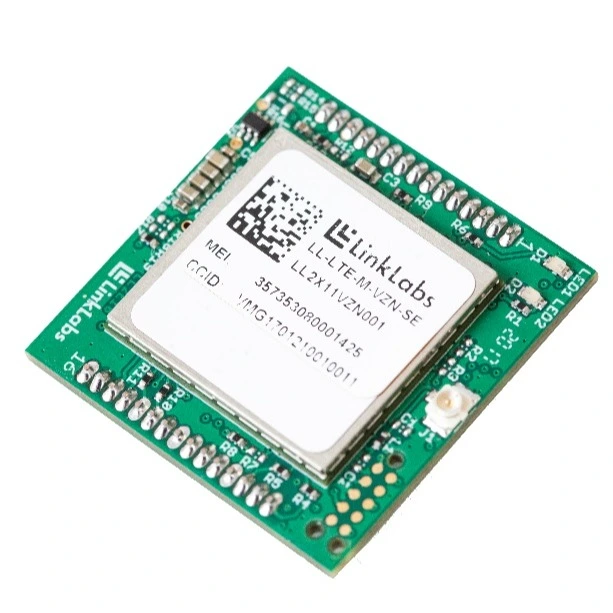With both Verizon and AT&T operating nationwide 4G LTE Category M1 (LTE-M) networks as of 2017, cellular IoT technologies like LTE-M and NB-IoT are now a reality. Cellular connectivity designed for IoT devices is great because it enables low bandwidth, low power connectivity; however, it’s not so simple for companies to implement it or to get a device up and running quickly. There’s a lot more to low-power cellular IoT deployment than simply putting a module on your device and connecting to the internet; as a result, it can be challenging for the average business to incorporate cellular into their devices, especially in a low-power way.
Why is the process so difficult?
There are different ways you can connect devices to cellular networks; some are harder than others. One way is the fundamental chipset route. Cellular radio chipsets are the lowest-level piece of the stack when it comes to IoT and are extremely hard to implement. Unless you’re a module manufacturer or an OEM who will be producing millions of devices, it’s not recommended to venture down this path.
Watch this free webinar to learn more about how you can avoid the pitfalls of LTE-M and NB-IoT and deliver greater value to your customers.
Most companies that incorporate cellular into their devices use a module, which includes the chipset as well as additional RF components required to operate the module in an approved way. These modules are typically certified by a number of bodies, including the FCC in the U.S., and either PTCRB for operating in North America or GCF (Global Certification Forum) for global use. Certification verifies that the module, when operated as defined by the manufacturer, complies with FCC, CE, or other national regulations, and with global cellular standards. Module manufacturers spend hundreds of thousands of dollars (sometimes even millions of dollars) to get these certifications, so by using a certified module, your own certification burden is much less.
But even a module certified by the organizations above still isn’t ready to use out of the box. Before you can put your device on a network it must be certified by a cellular carrier. The next point of entry for IoT cellular device connectivity, then, is a hardware “platform” like Link Labs’ LTE-M modem. Building our solution on the module noted above, we simplified the deployment process even further by getting carrier certification from Verizon, and adding features to enhance its performance and lower the cost.
Benefits of Link Labs’ LTE Cat-M1 Modem
Why choose Link Labs for your low-power application?
It saves you money.
Our device costs more than a module upfront, but less than what you’d spend once you factor in developing and deploying that module. And because our cellular solution is, by an order of magnitude, the most data-efficient company around when it comes to cellular, you’ll pay less in future cellular bills.
It reduces the complexity required to bring an IoT device to market.
When you get a module from a module manufacturer, you are still basically just getting a radio interface. Some of the more feature-rich modules have protocol stacks and security features included, but it will take a fair amount of work to build it to suit your application. At the same time, if you have a battery-constrained device (which, other than cost, is why you would use LTE-M) you’re looking for ways to optimize power usage and handle the variety of possible network responses. Rather than requiring you to interact with the module directly, our modem handles all of that for you. We’ve simplified the process to the point where you’re just sending and receiving data. Plus, in addition to obtaining precertification from Verizon, we’ve negotiated competitive bulk data pricing and service level agreements, as well as procured and provisioned the correct SIMs. There’s no need for you to negotiate data plans with any carriers—just activate the device on our system and it works.
It shortens time to launch.
Reduced complexity means reducing your timeline to deployment. Utilizing our LTE-M development kit, you won’t have to endure the months traditionally needed to build new connected devices. And with an open source software library, your developers can quickly add LTE-M communications capabilities to new and existing applications.
It’s power-efficient.
Thanks to years of work put in by our skilled developers, it’s almost impossible to not use our system in a power-efficient way. We make our system sleep if it’s not doing anything, and it draws microamps as opposed to the tens or hundreds of microamps other systems use (at best). We’ve focused our efforts on building a power- and data-efficient device so that you don’t have to.
It’s a future-proof platform.
All devices using our platform currently are pre-provisioned on the Verizon network, but the hardware and host interface will be the same for our AT&T module in the near future, as well as other global carriers as they begin to support LTE-M (and NB-IoT) commercially. So when new carriers roll out LTE-M, you’ll simply be able to choose a different SKU and you’re all set.
Would your device benefit from Link Labs’ LTE Cat-M1 modem?
If you’re trying to incorporate cellular into your IoT device but either don’t have experience with low power cellular or low power devices, or are producing fewer than 25,000 devices a year, your project is a perfect fit for our platform. Request a demo to see firsthand how it works and how it can accelerate your device’s time to market.





